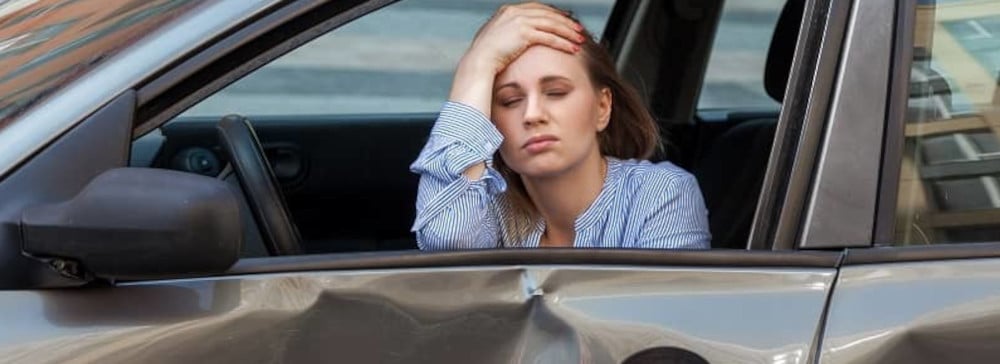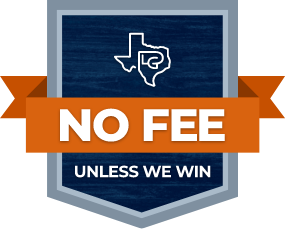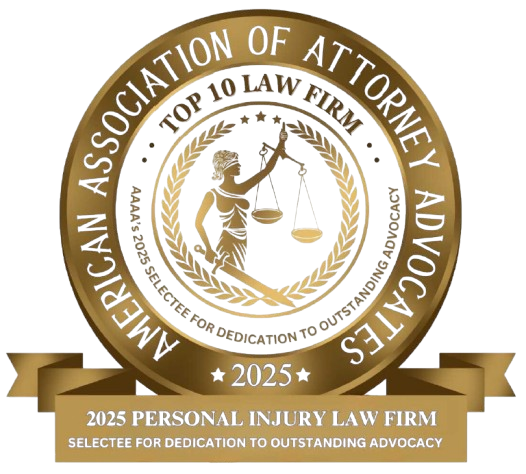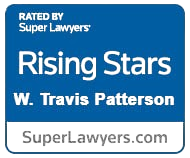A failure to yield ignores one of the most basic rules of the road that everyone drives by and can result in catastrophic consequences for victims and their families.
If you or a loved one were seriously injured in a failure-to-yield accident, speak with a Fort Worth car accident lawyer at Patterson Law Group. Failure-to-yield cases have particular fact patterns and laws that can influence who bears liabilities and what compensation you may be owed. As part of your free consultation, we will analyze your case, identify potential defendants, and review all of your legal options for restitution.
Texas Right-of-Way Laws

Right-of-way determines which party can legally move first in different circumstances. This includes vehicles such as cars and trucks, as well as pedestrians. When a driver does not follow the right-of-way, this is known as a failure-to-yield, and can require several parties to adjust their actions to this failure or be involved in an accident.
A few examples of right-of-way law requirements in Texas include:
- Vehicles turning left must yield for oncoming traffic or pedestrians;
- All vehicles must yield for trains;
- Drivers must observe road signs, such as yield signs or stop signs;
- Drivers driving onto main roads from smaller roads such as alleys must yield;
- Drivers merging onto a paved road from an unpaved road must yield;
- Drivers entering intersections, absent signs of the contrary, must yield to traffic to their right and cars already crossing; and
- Motorists must yield to school buses or emergency vehicles when they are using lights or sirens.
Examples of accidents that can result from failing to yield include:
- A vehicle striking a pedestrian in a crosswalk;
- A vehicle striking the side of a vehicle driving straight through an intersection that entered it before the striking driver;
- A truck sideswiping a car while merging onto a highway from a small side road; and
- A car striking a train as it is going through a train crossing.
Types of Failure-to-Yield Accidents
Some of the types of accidents resulting from not following the right-of-way include:
- Truck accidents, which are particularly dangerous because of the size and weight of the vehicle, transferring more force upon impact.
- Motorcycle accidents, which also have a high rate of deaths associated due to the vulnerability of a rider with little protection.
- Pedestrian accidents, with pedestrians having no protection from the collision.
Some of the most common types of collisions that occur between vehicles during a failure-to-yield accident include:
- Front-end collisions, also known as “head-on” collisions, are one of the most serious accidents on the road. They can result from a driver turning into an oncoming vehicle across lanes, colliding front ends.
- Side-Impact collisions, also known as “T-bone” collisions, are when the front end of one vehicle strikes the side of another. These are particularly serious as the side paneling offers little protection, and can be broken inwards to strike occupants with broken metal and glass.
- Rollovers, when a vehicle is rolled onto its side or top, can often be caused by a particularly hard side-impact collision.
Failure-to-yield accidents involving big rigs and 18-wheelers can be especially disastrous. Our Fort Worth truck accident lawyers have the skill and experience to handle these complex cases, which often involve suing not only the at-fault driver but also the trucking company employer.
Common Injuries
Common failure-to-yield car accident injuries include:
- Broken bones
- Traumatic brain injuries (TBIs). These injuries are some of the most serious, and can result in severe debilitation and require a long recovery.
- Neck injuries such as whiplash when the head is taken out of its normal range of motion.
- Spinal injuries that can cause paralysis, numbness, and many other symptoms.
- Post-traumatic stress disorder (PTSD) can result from the shock of the events surrounding the injury, as well as from the trauma that may occur during surgery or rehabilitation.
- Cuts and abrasions from broken glass and metal.
- Burns from fires started at the accident site.
Who Is Liable for Failure-to-Yield Accidents?
The driver who failed to yield can be held responsible for the accident if it can be shown that they were legally negligent in their actions or inactions. Liability for negligence is determined through a legal formula of establishing duty, breach, injury, and causation:
- Duty: The defendant must owe a duty to the plaintiff. This is typically to act as a reasonable person would under the circumstances, i.e., acting reasonably while driving.
- Breach: There was a breach of duty, such as someone failing to yield.
- Injury: The plaintiff suffered a loss, such as a bodily injury or damaged property.
- Causation: The defendant’s breach of duty must have been a direct cause of the plaintiff’s injury.
This formula seems straightforward but often has crucial nuances. Complexities can include distributing fault between several parties, addressing issues of potential defendants causing injuries while reasonably responding to emergencies they did not cause, or looking into employer liability in the case of accidents that happen when another driver is working during their accident.
If you have any questions about liability in an accident, speak with a Fort Worth personal injury attorney at Patterson Law Group. Our lawyers can review your case, explain the relevant fine points of negligence law, and counsel on how best to move forward.
What Damages Can Be Collected?

The damages that can typically be collected by the injured party in a lawsuit over a motor vehicle accident include economic damages and non-economic damages, as well as occasionally punitive damages. Economic damages are the financial losses that are sustained as a result of an accident. This can include:
- Property damage, such as the cost of repairing or replacing a car or property in the car that may have been damaged, i.e., a laptop in a trunk that was broken.
- Medical bills, including past and future bills.
- Lost wages from time out of work.
- Loss of future earnings or business opportunities.
- Rehabilitation, such as physical therapy or career counseling if an injured worker must change careers due to the accident.
Non-economic damages are those without an exact monetary value, such as the value of having to endure pain or having peace of mind. Even if there are averages for lawsuits and settlements, these are losses that do not have a readily ascertainable price tag. Non-economic damages include:
- Emotional pain or anguish
- Physical pain and suffering
- Disfigurement
- Physical impairment;
- Loss of companionship
- Loss of enjoyment of life, such as losing the ability to engage in previous activities
- Loss of consortium
Punitive damages, also called exemplary damages, are the most difficult to obtain. As the names imply, they are to punish a party, and to make an example to potential future defendants. To win them, a plaintiff must demonstrate that the defendant acted intentionally, recklessly, or with gross negligence – basically, they must have acted egregiously in disregarding an unjustifiable risk or intentionally causing an injury.
Although punitive damages are rare, they are typically for substantial sums as their purpose is to send a message.
Another significant consideration for damages is that Texas is a modified comparative negligence jurisdiction. This means that a plaintiff’s award of damages will be reduced by the amount of responsibility a court finds they bear for the accident. Additionally, should they be primarily at fault for the accident, they will not be able to collect damages. This is why it is even more important to determine not only the presence of liability, but also degree.
Is There a Time Limit to File a Claim?
Yes, a claim for negligence has a statute of limitations of two years. Any claim filed after that timeframe will need to qualify for an exception.
What to Do After a Failure-to-Yield Accident

As with most accidents, the first concern is safety. All parties that can should move out of the way of harm if there are any hazards like traffic present. If there are individuals that cannot be moved, call for emergency assistance.
Once this is done, documenting the circumstances of the accident can often start immediately with a phone. This can include:
- Getting the contact information for potential witnesses;
- Calling the police to fill out a police report;
- Exchanging information with the other driver;
- Recording your own account of the accident to refresh your memory later; and
- Taking photos of the scene of the accident, including documenting any potential causes, injuries, or damaged property.
Also, it is important to keep in mind things not to do, such as negotiating with insurers or an opposing party, or unnecessarily sharing information. This includes posting to social media, as other parties may review your accounts to find material to use against you during later legal proceedings.
Contact Patterson Law Group to schedule a free consultation to discuss these issues with one of our failure-to-yield accident attorneys in Fort Worth.







